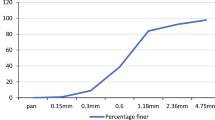Abstract
In the past, glass fiber-reinforced polymer (GFRP)-reinforcement has been successfully applied in reinforced concrete (RC) structures where corrosion resistance, electromagnetic neutrality, or cuttability were required. Previous investigations suggest that the application of GFRP in RC structures could be advantageous in areas with seismic activity due to their high deformability and strength. However, especially the low modulus of elasticity of GFRP limited its wide application as GFRP-reinforced members usually exhibit considerably larger deformations under service loads than comparable steel-reinforced elements. To overcome the aforementioned issues, the combination of steel and GFRP reinforcement in hybrid RC sections has been investigated in the past. Based on this idea, this paper presents a novel concept for the predetermination of potential plastic hinges in RC frames using GFRP reinforcement. To analyze the efficiency of the concept, nonlinear finite element simulations were performed. The results underscore the high efficiency of hybrid steel-GFRP RC sections for predetermining potential plastic hinges on RC frames. The results also indicate that the overall seismic behavior of RC structures could be improved by means of GFRP as both the column base shear force during the seismic activity as well as the plastic deformations after the earthquake were considerably less pronounced than in the steel-reinforced reference structure.
Similar content being viewed by others
References
Kam W Y, Pampanin S. The seismic performance of RC buildings in the 22 February 2011 Christchurch earthquake. Structural Concrete, 2011, 12(4): 223–233
International Federation for Structural Concrete. FRP Reinforcement in RC Structures. fib Bulletin 40. 2007
Abdel-Fattah B, Wight J K. Study of moving beam plastic hinging zones for earthquake-resistant design of reinforced concrete buildings. ACI Structural Journal, 1987, 84(1): 31–39
Al-Haddad M S, Wight J K. Relocating beam plastic hinging zones for earthquake resistant design of reinforced concrete buildings. ACI Structural Journal, 1988, 85(2): 123–133
Pimanmas A, Chaimahawan P. Shear strength of beam-column joint with enlarged joint area. Engineering Structures, 2010, 32(9): 2529–2545
Galunic B, Bertero V V, Popov E P. An Approach for Improving Seismic Behavior of Reinforced Concrete Interior Joints. Report UCB/EERC-70/30. 1977
Chutarat N, Aboutaha R S. Cyclic response of exterior reinforced concrete beam-column joints reinforced with headed bars—Experimental investigation. ACI Structural Journal, 2003, 100(2): 259–264
Eom T S, Song J A, Park H G, Kim H S, Lee C N. Cyclic loading test for beam-column connection with prefabricated reinforcing bar details. ACI Structural Journal, 2013, 110(3): 403–413
Pilakoutas K, Neocleous K, Guadagnini M. Design philosophy issues of fiber reinforced polymer reinforced concrete structures. Journal of Composites for Construction, 2002, 6(3): 154–161
Sharbatdar M K, Saatcioglu M. Seismic design of FRP reinforced concrete structures. Asian Journal of Applied Sciences, 2009, 2(3): 211–222
Tavassoli A, Liu J, Sheikh S. Glass fiber-reinforced polymer-reinforced circular columns under simulated seismic loads. ACI Structural Journal, 2015, 112(1): 103–114
Hasaballa M, El-Salakawy E. Anchorage performance of GFRP headed and bent bars in beam-column joints subjected to seismic loading. Journal of Composites for Construction, 2018, 22(6): 04018060
Ghomi S K, El-Salakawy E. Seismic behavior of exterior GFRP-RC beam—column connections: Analytical study. Journal of Composites for Construction, 2018, 22(4): 04018022
Ghomi S K, El-Salakawy E. Effect of joint shear stress on seismic behavior of interior GFRP-RC beam—column joints. Engineering Structures, 2019, 191: 583–597
Aliasghar-Mamaghani M, Khaloo A. Seismic behavior of concrete moment frame reinforced with GFRP bars. Composites. Part B, Engineering, 2019, 163: 324–338
Leung H Y, Balendran R V. Flexural behavior of concrete beams internally reinforced with GFRP rods and steel rebars. Structural Survey, 2003, 21(4): 146–157
Qu W, Zhang X, Huang H. Flexural behavior of concrete beams reinforced with hybrid (GFRP and steel) bars. Journal of Composites for Construction, 2009, 13(5): 350–359
Safan M. Flexural behavior and design of steel-GFRP reinforced concrete beams. ACI Structural Journal, 2013, 110(6): 677–685
Maranan G B, Manalo A C, Benmokrane B, Karunasena W, Mendis P, Nguyen T Q. Flexural behavior of geopolymer-concrete beams longitudinally reinforced with GFRP and steel hybrid reinforcements. Engineering Structures, 2018, 182: 141–152
McKenna F, Fenves G L. Open System for Earthquake Engineering Simulation. 2019 (available at the website of OpenSees)
CSA G30.18-09. Carbon Steel Bars for Concrete Reinforcement. Mississauga: Canadian Standard Association, 2014
Spacone E, Filippou F C, Taucer F F. Fibre beam-column element for nonlinear analysis of R/C frames. Part I: Formulation. Earthquake Engineering & Structural Dynamics, 1996, 25(7): 711–725
Mohd Yassin M H. Nonlinear analysis of prestressed concrete structures under monotonic and cycling loads. Dissertation for the Doctoral Degree. Berkeley, CA: University of California, 1994
Kent D C, Park R. Flexural members with confined concrete. Journal of the Structural Division, 1971, 97(7), 1969–1990
Scott B D, Park R, Priestley M J N. Stress-strain behavior of concrete confined by overlapping hoops at low and high strain rates. ACI Structural Journal, 1982, 79(1): 13–27
Filippou F C, Popov E P, Bertero V V. Effects of Bond Deterioration on Hysteretic Behavior of Reinforced Concrete Joints. Report EERC 83-19. 1983
CSA A23.3-14. Design of Concrete Structures. Toronto: Canadian Standard Association, 2015
Acknowledgements
The investigations presented in this paper were supported by Alexander von Humboldt Foundation, Germany, through a Feodor Lynen Research Fellowship for Post-Doctoral Researchers and by a grant from Natural Sciences and Engineering Research Council (NSERC) of Canada. The authors would like to express their sincere gratitude for the support received.
Author information
Authors and Affiliations
Corresponding author
Rights and permissions
About this article
Cite this article
Kueres, D., Topuzi, D. & Polak, M.A. Predetermination of potential plastic hinges on reinforced concrete frames using GFRP reinforcement. Front. Struct. Civ. Eng. 16, 624–637 (2022). https://doi.org/10.1007/s11709-022-0832-2
Received:
Accepted:
Published:
Issue Date:
DOI: https://doi.org/10.1007/s11709-022-0832-2




